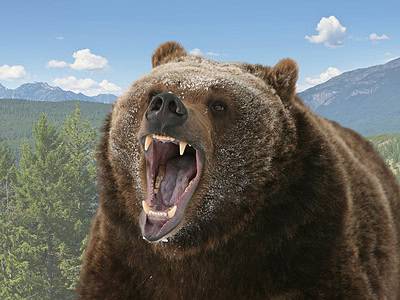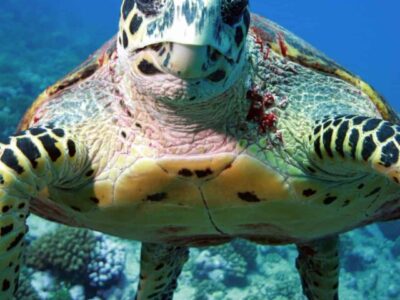The biggest species in the Smilosuchus genus, S. gregorii, was the largest known reptile of its time, reaching a length of up to 39 feet.
Advertisement
Smilosuchus Scientific Classification
- Kingdom
- Animalia
- Phylum
- Chordata
- Class
- Reptilia
- Order
- Phytosauria
- Family
- Parasuchidae
- Genus
- Smilosuchus
- Scientific Name
- Smilosuchus gregorii
Read our Complete Guide to Classification of Animals.
Smilosuchus Conservation Status
Smilosuchus Facts
- Prey
- Fish, invertebrates, other reptiles
- Fun Fact
- The biggest species in the Smilosuchus genus, S. gregorii, was the largest known reptile of its time, reaching a length of up to 39 feet.
- Biggest Threat
- Possibly disease
- Most Distinctive Feature
- Long snout with high rostral ridge
- Distinctive Feature
- differentiated teeth, extra long tail, bony armor, short and stout legs
- Habitat
- Swampy land near streams
- Diet
- Carnivore
- Common Name
- Smilosuchus
- Special Features
- Body similar to crocodiles, long snout, high rostral ridge, nostrils on top of head near eyes, extrnal bony armor
- Number Of Species
- 3
Smilosuchus Physical Characteristics
- Skin Type
- Boney Plates
- Length
- 5 to 12 meters
- Aggression
- High
View all of the Smilosuchus images!
The giant crocodile-like predator, Smilosuchus, had eyes on top of its head!
The Smilosuchus lived during the Mesozoic era, during the Late Triassic period from about 221 to 205 million years ago. Three species have been identified belonging to the Smilosuchus genus. These include S. gregorii, S. adamanensis, and S. lithodendrorum. Each of these species has been assigned to different genera in the past, including Machaeroprosopus and Rutiodon, but were grouped under Smilosuchus in 1995.
These massive reptiles looked a lot like crocodiles, with notable exceptions. But they are not ancestors of crocodiles. Smilosuchus, like many other ancient crocodile-like reptiles, evolved separately. They are of the Phytosauridae family, whereas crocodiles are of the family Crocodylidae.
Incredible Smilosuchus Facts
- One species of Smilosuchus could grow up to 39 feet long.
- The Smilosuchus had nostrils on top of their head, near their eyes, instead of at the end of their snout.
- The tail of the Smilosuchus was much longer than modern crocodilians, making up around half their body length.
Description and Size
One might think “Smilosuchus” means crocodile with a very toothy grin, but it actually means “chisel crocodile” or “knife crocodile.” This massive reptile was shaped much like a modern crocodile. Its body was covered in osteoderms, or bony armor, stronger than that of similar modern reptiles. It had short and stout legs which could support its body when walking on land. Its muscular tail was much longer in proportion to its body than any crocodilians today, making up about half its length or more.
One of the species, Smilosuchus gregorii, was the one of the largest predators that existed, up until the dinosaurs. It could reach lengths of up to 12 meters, or 39 feet. Its skull alone could be more than five feet long. Smilosuchus adamanensis was practically a runt by comparison, with a length of about 5 meters or a little over 16 feet. For reference, S. gregorii was about the length of a full size, 84 passenger school bus, while S. adamanensis was roughly the length of a 15 passenger van.
One of the most notable features of Smilosuchus was its formidable snout. Each of the three species varied slightly in the shape of their snouts and the type of teeth they had. However, they all had very long snouts with a large rostral ridge. The size of this ridge helped to differentiate species of this genus from the similar Leptosuchus.
Smilosuchus also had nostrils on top of its head, near its eyes. This is quite different from modern crocodilians which have nostrils at the ends of their snouts.

Smilosuchus had eyes and nostrils close to one another and on the top of its head.
What Did Smilosuchus Eat?
The teeth of the Smilosuchus differed from species to species and could give some indication of what they ate. It is clear by their size and features they were apex predators. The anatomy of their jaws indicates that they had powerful bites.
S. gregorii would have been a fearsome predator both in and out of the water. It had a deep snout with large, protruding, tusk-like teeth at the tip. It would have used these teeth to snatch its prey. Then it would have sliced and ripped flesh from bone with the rest of its mouthful of sharp and serrated teeth. This Smilosuchus would have likely dined on other crocodile-like reptiles, large herbivorous reptiles like the hippopotamus-shaped Placerius, or pretty much anything else that it could take down with its massive jaws.
S. adamanensis had smaller and more conical teeth, and a snout that was considerably more slender than S. gregorii. This Smilosuchus likely spent more of its time in the water, given that its femur was much less sturdy than that of S. gregorii. Its diet probably consisted mostly of large fish and smaller terrestrial animals.
Habitat – Where and When It Lived
Smilosuchus lived during the Late Triassic period. Researchers estimate that it lived from approximately 221 to 205 million years ago, dying out in a mass extinction that occurred near the end of the Triassic. Dinosaurs would eventually fill the niche that Smilosuchus and other massive reptilian predators once held.
Researchers have unearthed Smilosuchus specimens in the Chinle Formation near the Petrified Forest National Park in Arizona and as far east as the Rotten Hill bonebed in the panhandle of Texas. The giant predators lived in and around the streams and swamps that covered the area. Their remains were well preserved due to the rapid deposition of sediment over the area.
Threats and Predators
Smilosuchus was an enormous and powerful predator, but that does not mean that it was without threats of its own. Researchers have studied the leg bones from an S. gregorii specimen found in Arizona. These included the humerus, femur, fibula, ulna, and foot bones. The bones had evidence of damage and repair over a span of time.
The damage to the bones that were studied may have been caused by trauma, possibly from the bites of another large predator. They might also have been caused by a microscopic but equally deadly threat – bacteria. The researchers who examined the bones concluded that the damage they saw was likely the result of osteomyelitis, or inflammation of the bone caused by a bacterial infection.
Discoveries and Fossils – Where Was Smilosuchus Found?
Smilosuchus fossils have been found in the Chinle Formation, specifically in the area of the Petrified Forest National Park in Arizona and in the Rotten Hill bonebed in the Texas panhandle.
Charles L. Camp, a renowned paleontologist, first named the three species that now make up the genus Smilosuchus in 1930. However, he designated them Machaeroprosopus gregorii, Machaeroprosopus adamanensis and Machaeroprosopus lithodendrorum. The latter two species were temporarily placed in the Rutiodon taxon in the 1960s, before finally rejoining the former in the Smilosuchus genus, named by Long and Murry in 1995.
Extinction – When Did Smilosuchus Die Out?
It is thought that Smilosuchus went extinct around 205 million years ago. It died out in the mass extinction that occurred near the end of the Triassic period. The cause of this extinction is not known, although there has been speculation about climate change, volcanic activity or changes in the oceans. We do know that Smilosuchus was among the roughly 35 percent of species that were wiped out at that time.
Similar Animals to the Smilosuchus
- Deinosuchus – A reptile that lived in North America 82 to 73 million years ago. Roughly the same size as S. gregorii.
- Sarcosuchus – A giant crocodyliform that lived in the area that is now the Sahara about 133 to 112 million years ago.
- Barinasuchus – A reptile from the Cenozoic era that lived in what is now South America. Roughly the same size as S. adamanensis.
Related Animals:
- Discover the Ancient Predator That Came Before the Velociraptor
- Are Dinosaurs Reptiles?
- 8 Extinct Sea Creatures
Smilosuchus FAQs (Frequently Asked Questions)
When was Smilosuchus alive?
Smilosuchus lived in the Late Triassic period of the Mesozoic era, from about 221 to 205 million years ago.
What happened to Smilosuchus?
All the Smilosuchus species died out in the mass extinction event that occurred near the end of the Triassic period.
How many species of Smilosuchus existed?
There were three known species of Smilosuchus: S. gregorii, S. adamanensis and S. lithodendrorum.
How big was Smilosuchus?
The largest of the Smilosuchus species, S. gregorii, could reach lengths of up to 12 meters, or 39 feet. The smaller S. adamanensis was at least 5 meters long, or a little over 16 feet.
What did Smilosuchus eat?
S. gregorii, which spent more of its time on land, ate mostly large, terrestrial reptiles such as the hippopotamus-like Placerius. The more aquatic S. adamanensis ate mostly fish and smaller reptiles. S. lithodendrorum is thought to have eaten a mix of prey.
Was Smilosuchus a good swimmer?
The extremely long and powerful tail of the Smilosuchus indicates it was a good swimmer.
Where was Smilosuchus found?
The Smilosuchus specimens that have been found are in what is known as the Chinle Formation. Most have been found near the Petrified Forest National Park in Arizona, and at least one was found in the Rotten Hill bonebed in the panhandle of Texas.
Thank you for reading! Have some feedback for us? Contact the AZ Animals editorial team.
Sources
- Bioweb / Accessed October 27, 2022
- UNCG / Accessed October 27, 2022
- Palaeo Electronica / Accessed October 27, 2022

















